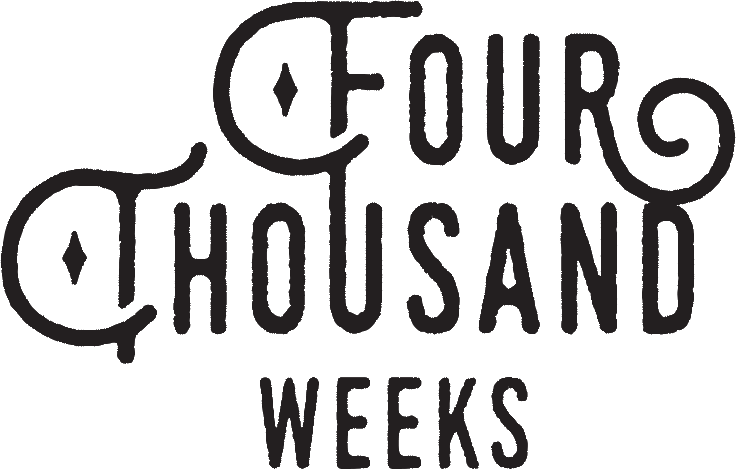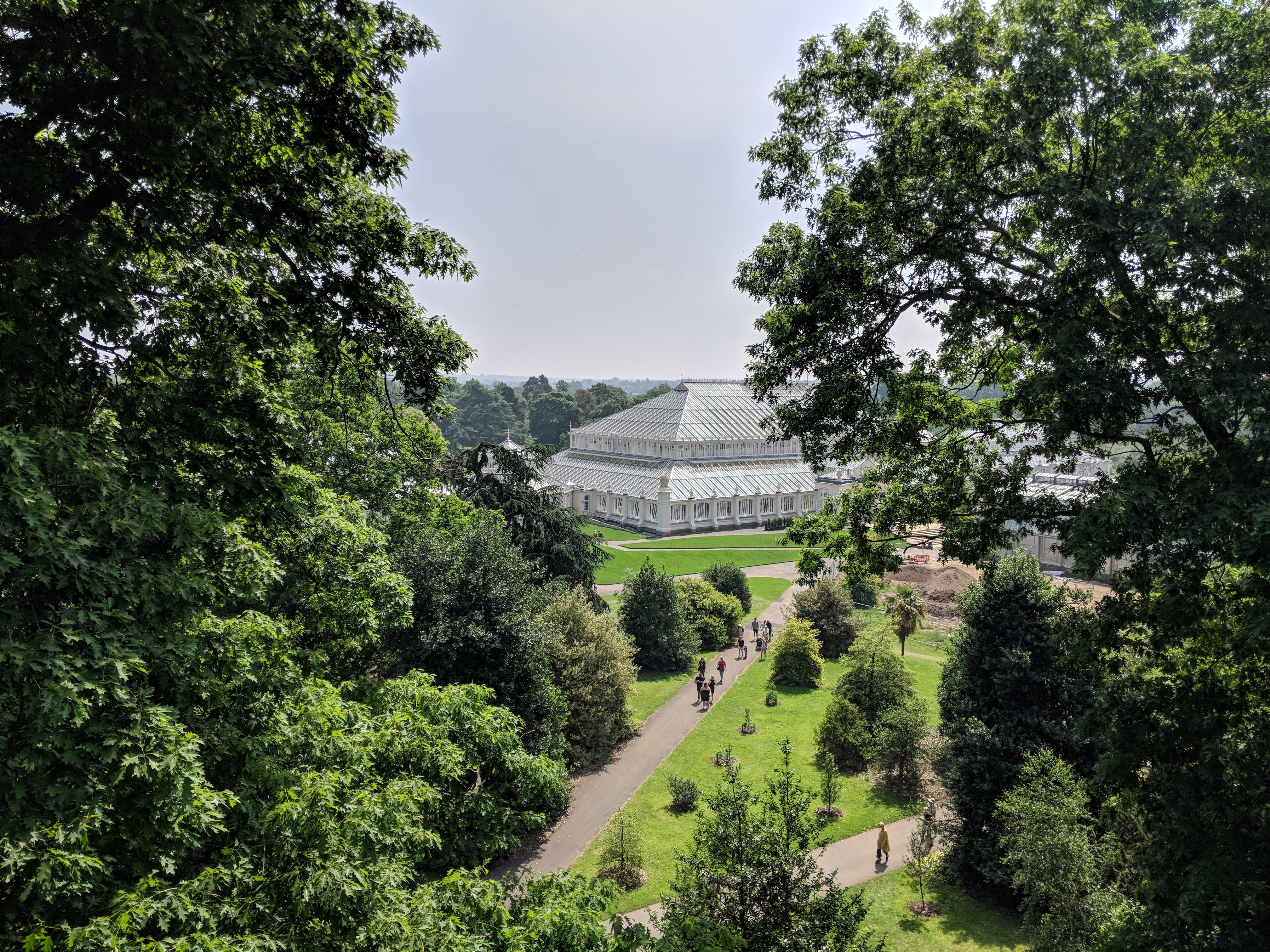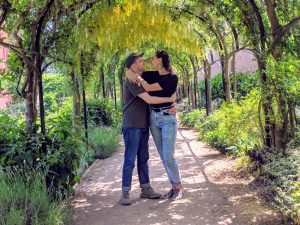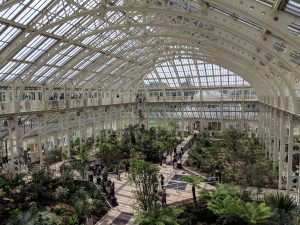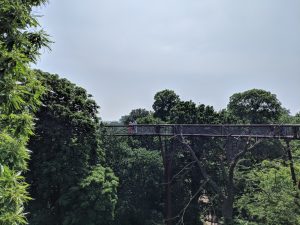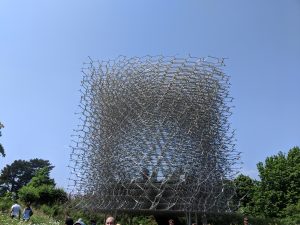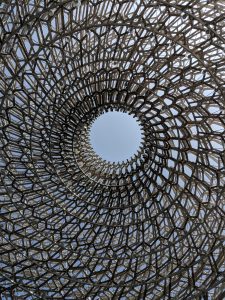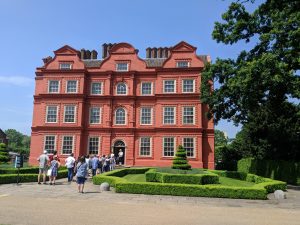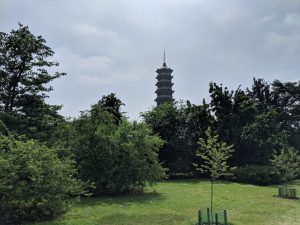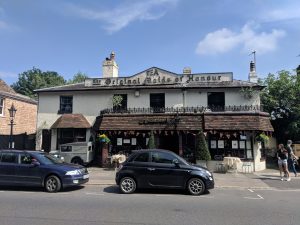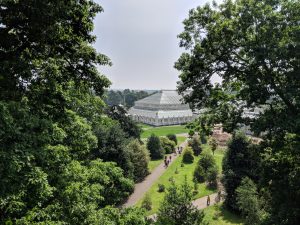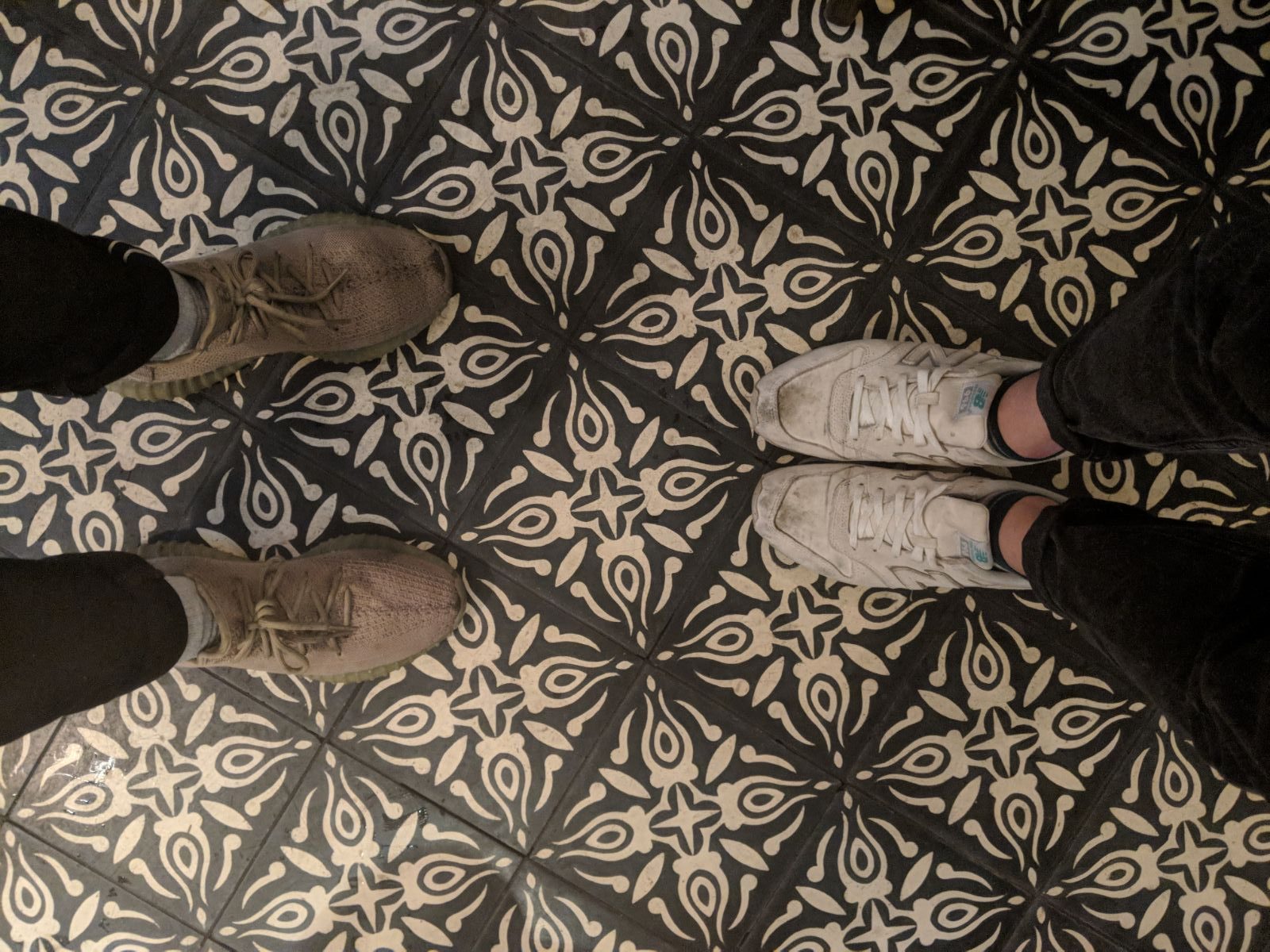We went festival mad this weekend, from All Points East, to the Rolling Stones and Slam Dunk, that by the time bank holiday Monday rolled around we were pooped! However, it was a beautiful day and we had a mission: make sure our lovely pal Brittany had a fabulous day out at Kew and see if we could add in a few extras too.
We met in the ticket queue at Victoria gate, and got our tickets (see the end of the post for ways to make it cheaper), and using our student cards as discount headed off into what we thought would be a lovely stroll around the gardens.
Kew is so much more than that. Firstly, it’s huge. Massive. Ginormous. You should take an entire day – either with a picnic or enjoy one of their amazing restaurants and cafes they have (the Orangery looks so snazzy), and just spend the whole time there!
The newly re-opened Temperate house sounds like something from the Victorian times…because it is. Like most of the things in Kew they were built at any point between Henry VIII and Victoria, mostly during William and then Victoria’s region though. The temperate house, a Grade I listed building is twice the size of the Palm House, which is relatively close by and definitely worth a humid visit. The Temperate House is home to an internationally important collection of temperate zone plants, including some of the rarest and most threatened in the world.
If you walk into the depth of the trees in Kew, and follow the map and the signs, you will come across the Treetop Walkway. DO NOT MISS IT. The Treetop Walkway is 200 metres long and towers 18 metres above the ground, nestling in the canopy of the trees around, and giving you a rare insight into the complex ecosystem of the forest canopy, a world teeming with birds and insects, lichens and fungi. Made from over 400 tonnes of weathered steel, the rusted steel columns blend in with the natural environment. Make sure you don’t miss it, even Jess who is terrified of heights did it and enjoyed every second.
The Hive is another well talked about part of Kew – and it is fascinating. Constructed by a man that wasn’t a well known artist/architect before he won the competition – it is a fabulous show of the importance of our environment, and particularly the bees within it. A mixture of architecture and living exhibitions (can you call plants an exhibition), it is a real draw and one you should spend time in. Particularly, if like us you like contemplating your size and worth on the planet.
One bit we only had the chance to see the outside of was the summer home of King George III, Kew Palace, and the Royal Kitchens. The Palace is one of the lesser known royal residences in London and is the oldest building within the Gardens, built in 1631 for a Flemish merchant Samuel Fortrey. A lovers knot with the initials S and C are carved over the front door of the house representing his initials and that of his wife, Catherine de Latfeur. About 100 years later, it was leased by Queen Caroline and subsequently bought by George III. He and his wife, Queen Charlotte, spent happy summers at Kew Palace with their 15 children and it was an important refuge during his infamous episodes of ‘madness’. After Queen Charlotte died in 1818, Kew Palace was closed up. It was acquired by Kew in 1898 and opened to the public. The Royal Kitchens are next to the Palace, preserved from the time of Queen Charlotte’s death in 1818. The great kitchen and the preparation rooms give an insight into the servants who worked in them and Georgian culinary life, complete with people dressed up in period costume and with a great insight into the roles of people there. The vegetable and herb gardens behind the kitchen are still in use today!
There are some other wacky things throughout the 300 acres of beautifully crafted garden, including a pagoda (that is still being built) and a totally zen Japanese Gateway. The Chokushi-Mon (Gateway of the Imperial Messenger) is a near replica of the Gate of Nishi Hongan-ji (Western Temple of the Original Vow) in Kyoto, Japan. It was created for the Japan-British Exhibition held at White City in London in 1910, The Japanese Gateway is built in the architectural style of the late-16th century Momoyama (or Japanese rococo) period. The Gateway has finely carved woodwork with stylised flowers and animals, with the most intricately carved panels depicting an ancient Chinese legend about the devotion of a pupil to his master. It is one of the most spectacular pieces of landscaping and with the roaming of peacocks and geese and other beautiful wildlife around, it is somewhere we could have stayed for the whole day.
In short, Kew is amazing. With the global challenges of climate change, biodiversity loss and food security, these important plant collections highlight Kew’s role in safeguarding rare and threatened plants from extinction, and all the money from ticket sales goes to help support this.
After Kew we decided that it would be great for Brittany to experience a traditional British afternoon tea, so we went to Newens The Original Maids of Honour, just up the road from Kew Gardens. It’s amazing, imagine going back in time mixed with walking into your nana’s living room, with crockery and furniture to match. It is a brilliant tourist trap but totally authentic…the issue we had was that we didn’t end up having a cream tea as we had the most delicious quiche and salad instead! Oops! The cream teas we saw on offer looked fabulous. Why did we head to Newen’s you ask? Well, the history really. They have been there for a very long time, legend has it that they have been keeping traditional baking skills alive for over 120 years. And their history dates back even further – to Tudor times and the dainty little tarts they’re named after. Legend has it that ‘Maids of Honour’ were brought to notoriety by Henry VIII who so loved their ‘melt-in-the-mouth’ sensation, he took the recipe and kept it under lock and key at Richmond Palace!
Ways to make your visit to Kew Gardens cheaper
- Book online in advance. If you book it online before the day of going, it’s over £1 per person cheaper. You can book online here.
- Use your student card! No Matter where your from this automatically cuts ticket prices in half.
- Become a friend of Kew – great if you want to visit more than once a year, and it also gives you discounts in the shop and restaurants.
- Keep your eye’s out on Money Saving Expert and Picniq where they often have offers and discounts, from half price entry to kids go free!
- National Rail! If you are going by train on the day that you plann to visit Kew, keep your ticket (make sure the ticket machine doesn’t swallow it) and fill in this form to get a 2for1 ticket to Kew – this doesn’t just work here but also at loads of other attractions across the UK, it’s brilliant!
